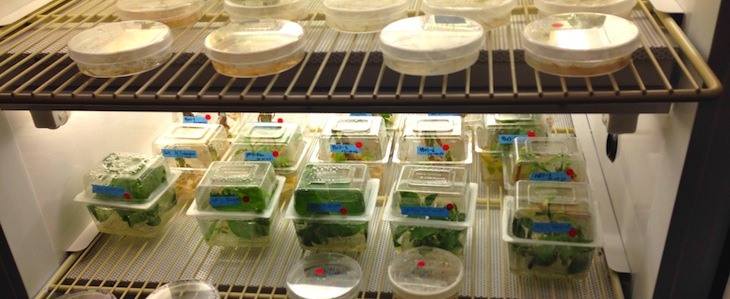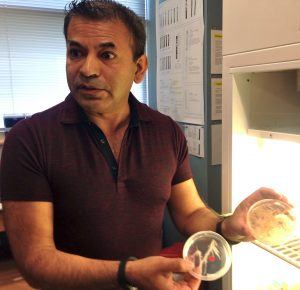Arkansas State University scientists working on using spinach leaves to replace heart veins
by March 30, 2017 5:21 pm 893 views

Plant-based testing for recreating human tissue is being tested Dr. Fabricio Medina-Bolivar at Arkansas State University.
Dr. Fabricio Medina-Bolivar was fascinated by the plant-based remedies developed in his home country of Peru. Traditional, pharmaceutical medicines were rarely available, and he wondered what properties in the plants led to cures. He’s now part of a project that could use spinach leaves to recreate veins in the human heart.
Medina-Bolivar is professor of plant metabolic engineering, at Arkansas State University. He is a member of a team of researchers from Worcester Polytechnic Institute (WPI), University of Wisconsin-Madison that hope to use leaves and roots to create human tissues, Medina-Bolivar told Talk Business & Politics.
“People cannot imagine that this is possible,” he said.
There is no viable way to recreate the human vascular system, or veins and it can be a serious problem during organ transplant and other surgeries, Medina-Bolivar said. WPI scientists developed a theory that the veins found in roots and leaves could be used as “scaffolds” and could be inundated with human cells.
In late 2014, WPI approached Medina-Bolivar about collaborating on the project. He has been with ASU since 2005, and he is an expert in using plants to produce chemicals to be used by humans for a wide-range of reasons. He agreed to join the team in 2015.
His team developed a bioengineering process to remove all the plant cells. What remains are the structures, such as the veins. He refers to them as scaffolds.
“We’re using nature’s architecture to solve a unique problem,” he said.

Once the plant cells are removed, the scaffolds are infused with human cells. To this point, the experiments with the plant-based scaffolds have worked, he said. Research into this technique is in its infancy, and it will be years before animal and human testing can even be contemplated, but the team has proved their own proof of concept. A research paper detailing their work has been published in the journal, Biomaterials.
Leaves and roots are abundant in nature, meaning there could be infinite possibilities, he said. WPI has focused on reproducing plant-based human tissues for the heart. Spinach leaves have proven to be a viable candidate to replicate the vein systems in the heart, he said. This science could have practical applications for other organs such as the lungs, he said.
At any given time there are 100,000 people waiting on organ donor lists. About 22 people die each day waiting for a donor. Finding compatible organs can be difficult, but the problem is exacerbated by lack of vascular systems that can be used, he said. In recent years, tissue grafts, taking veins from other parts of the body has helped in this regard, but it has completely solved the problem, he said. Animal and synthetic scaffolds have been attempted, but are more costly than plant-based solutions, he said.
“Leaves and roots are everywhere … look at the differences between all the leaves found in nature,” he said.
The next phase is to test more leaves and roots. More tests and analysis will have to be done before animal and human trials can be contemplated, he said. It’s not known, for instance, if the human body will reject these artificial veins.
To complete the project, the team will have to raise at least $1 million or more, he said. The team will apply for grants and other funding sources. The collaborative effort between WPI and ASU has been remarkable, he said.
“This approach came the brain storming of many groups,” Medina-Bolivar said. “This is the greatness of science.”
